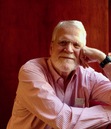Mark Scott Smith's Blog: Enemy in the Mirror, page 89
July 24, 2017
Dunkirk 1940
After seeing the new movie DUNKIRK directed by Christopher Nolan last night, I wanted to recommend it to you readers. Like the top film critics, I found this film technically flawless and emotionally extremely powerful.
The film’s soundtrack by Hans Zimmer kept me on the edge of my seat.
In September 1939, Nazi Germany’s invasion of Poland resulted in a declaration of war by France and Great Britain. A British Expeditionary Force (BEF) was sent to help with the defense of France. What followed was eight months of “phoney war” with no major battles. With protection of the fabled Maginot Line and the Ardennes forest, the Allied expectation was that Germany would initiate an attack against France through Belgium as it had in WWI.
German General Erich Manstein, however, decided to advance through the Ardennes Forest directly into Northern France on a route perceived by the Allies as as impenetrable. The unexpected, lightning movement by the Wehrmacht swiftly cut off hundreds of thousands of Allied troops. The only escape route was the sea.

On May 24, 1940, British and French troops were trapped between advancing German Panzer columns and the English Channel. Unexpectedly, the Germans halted their advance for an unexplained 48-hours, allowing the Allies to dig in, establish a defensive perimeter and initiate evacuation plans at Dunkirk. Over eight days, 338,226 soldiers were rescued by a make-shift fleet of >800 civilian and naval craft.
Reportedly, weather conditions limited both RAF and Luftwaffe air combat.
Britain’s limited deployment of naval vessels in the Dunkirk rescue may have been due to lack of available ships, the shallow draught of Dunkirk harbor–or possibly a reluctance, during a time when the invasion of England seemed imminent, to deploy precious capital ships to a dangerous rescue operation.
The most inspiring thing about the Dunkirk evacuation was the maritime response of brave and courageous British civilians.
In the film, the Jericho Trompete sirens of the Luftwaffe Junker-87 Stuka (Sturzkampfflugzeug) emit a terrifying shriek that builds as the dive bomber approaches the target.
Some have criticized the failure of French generals during the Fall of France. Nevertheless, many ordinary Frenchmen fought bravely and honorably at Dunkirk. As British and French troops awaited evacuation on the beach, French soldiers 40 miles southeast of Dunkirk, put up stiff resistance against an overwhelming Wehrmacht force, allowing the Allies time to prepare.

The post Dunkirk 1940 appeared first on Enemy in the Mirror.
July 20, 2017
Bomb Kills Oregon Picnickers – May 1945
Radiolab just broadcast an excellent, detailed account of the Japanese balloon bomb incident at Bly, Oregon
LISTEN: http://www.radiolab.org/story/war-our-shore/
My history-inspired novel Enemy in the Mirror: Love and Fury in the Pacific War includes a fictionalized account of the event that killed a minister’s wife and five adolescents on a church group outing in May 1945.

The post Bomb Kills Oregon Picnickers – May 1945 appeared first on Enemy in the Mirror.
July 17, 2017
Buchenwald liberated – April 1945
The motto “Jedem das Seine“ displayed over the entrance to the Buchenwald concentration camp, is an old German proverb derived from the Latin phrase “suum cuique“ meaning “to each his own” or “to each what he deserves.”
Built in the woods of Thuringia, above the municipality of Ettersberg, Buchenwald was one of the largest concentration camps established within the old German borders of 1937. By 1938, prisoners from all over Europe and the Soviet Union, mentally ill and physically-disabled people, gypsies, Freemasons, Jehovah’s Witnesses, recidivist criminals, homosexuals, prisoners of war and ~10,000 Jews were interned in the camp.

Buchenwald inmates were deployed in forced labor, treated with extraordinary cruelty and frequent summarily executed by SS-Totenkopfverbände guards.

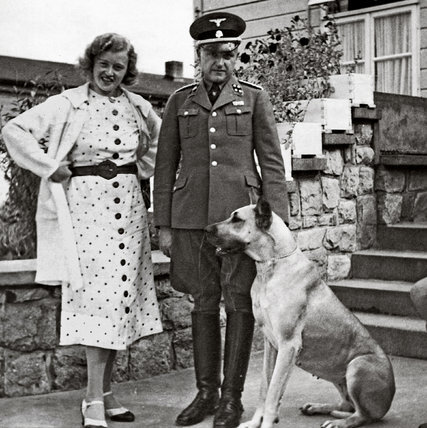
SS Totenkopfverbände Colonel Karl Otto Koch, the commandant of Buchenwald, with his wife, Ilse.

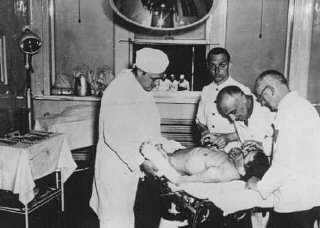
Medical experiments performed on the prisoners included infecting them with contagious diseases such as typhus, typhoid, cholera and diphtheria in order to determine vaccine efficacy.


In January 1945, as Soviet forces advanced across Poland toward Germany, more than 10,000 prisoners (most of the Jews) were force-marched from Auschwitz and Gross-Rosen camps in Poland to Buchenwald.


In early April 1945, as U.S. forces approached, the Germans began to evacuate ~28,000 prisoners from the main camp and several thousand more from the sub-camps of Buchenwald. About a third of these prisoners died from exhaustion or were shot by the SS. Underground resistance leaders who held some administrative jobs within the camp were able to obstruct Nazi orders and delay the evacuation of many prisoners.

On April 11, 1945, in expectation of liberation, starving prisoners stormed the watchtowers and seized control of the camp. Some guards were killed and the remainder forced to flee into the woods. Later that day, Patton’s 6th Armored Division arrived to liberate the camp,
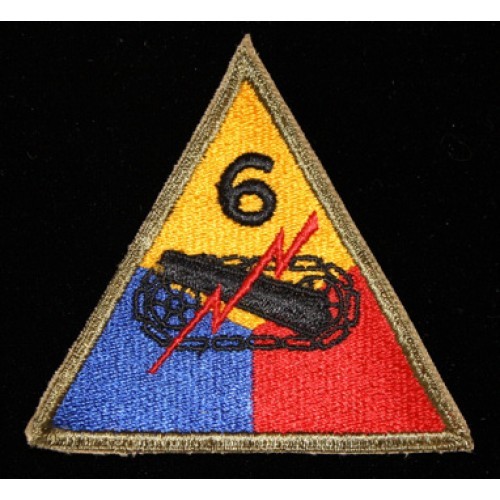

One of the first American soldiers to enter the camp described the experience:
“We were tumultuously greeted by what I was told were 21,000 men, and what an incredible greeting that was. I was picked up by arms and legs, thrown into the air, caught, thrown again, caught, thrown, etc., until I had to stop it. I was getting dizzy. How the men found such a surge of strength in their emaciated condition was one of those bodily wonders in which the spirit sometimes overcomes all weaknesses of the flesh. My, but it was a great day!” – Captain Frederic Keffer
From 1937 to April 1945, the SS imprisoned ~250,000 persons in Buchenwald. Since camp authorities never registered a significant number of the prisoners, mortality figures are only estimates: but at least 56,000 male prisoners (~11,000 Jews) were murdered at Buchenwald by the SS.




After liberation of the camp, villagers of Namerin were forced to file past bodies of victims murdered by the SS on the forced march.

The post Buchenwald liberated – April 1945 appeared first on Enemy in the Mirror.
July 13, 2017
My Japan 1945
This propaganda film was produced by the U.S. Treasury Department in 1945 in an effort to promote War Bond sales.
My Japan might be described as a heavy-handed attempt to elicit angry responses from American citizens regarding Japan’s audacity as well as contempt for their own materialistic values.
Although it now seems ludicrous with a Caucasian narrator made up to look and sound stereotypically Japanese, it is interesting to note the emphasis on hard work, perseverance, sacrifice, austerity and the need to support the war effort financially.
The post My Japan 1945 appeared first on Enemy in the Mirror.
July 10, 2017
Nazi Child Soldiers
In 1936 participation of boys and girls in Nazi youth groups became mandatory. At the onset of WWII older Hitler Jugend (HJ) boys were conscripted into the armed forces while younger boys functioned as air raid wardens and anti-aircraft gun assistants.

Also you…
Girls in the Bund Deutscher Mädel (BDM) offered refreshments to departing troops on railway platforms, cared for wounded soldiers in hospitals, helped in kindergartens and assisted households with large families.
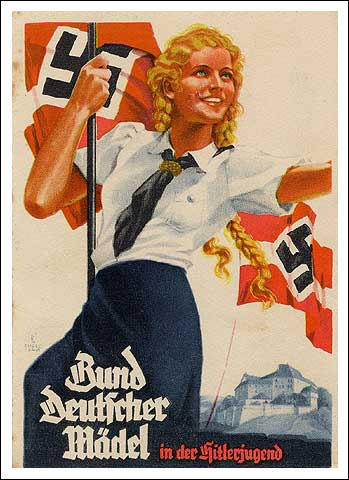
Starting in January 1943, anti-aircraft batteries were officially manned solely by Hitler Youth boys. After a raid, Hitler Youth also assisted in neighborhood cleanup and the relocation of bombed-out civilians.

As military manpower dwindled in 1943, 16-17 year-old volunteers were recruited for the 12th SS Panzer HJ Division. In the summer of 1944, Hitler ordered Hitler Youth as young as fifteen to be trained as replacements and sent to the Russian Front. On D-Day June 6, 1945, the Hitler Youth Division was deployed in Normandy.By the end of its first month in battle, 20% of the HJ Division had been killed and 40 percent wounded or missing. By September 1944, only 600 HJ had survived. The diminished HJ Division continued to exist for the duration of the war, as even younger volunteers were recruited along with a mixture of conscripts.
In September 1944, anticipating the invasion of the Fatherland, every able-bodied male aged 16 to 60 was incorporated into the Volkssturm (People’s Army) and trained to use the Panzerfaust anti-tank weapon.

Hitler Youth reportedly fought against the Allies with fanatical and reckless behavior, often fighting until there were no survivors. Many committed suicide rather than being taken captive. Toward the end of the war, in addition to participating in major battles, they were deployed as guerrillas, spies and saboteurs in territory occupied by the Allies.
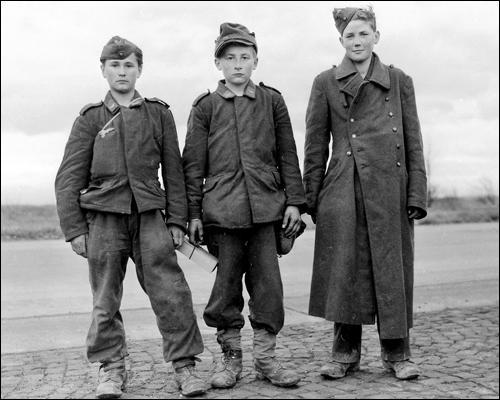
In the end, as Russian forces were nearing Berlin, Hitler made the disgraceful decision to order all German youth to fight to the death in a hopeless cause.
In April 1945, just ten days before his death, Hitler came out of his Berlin bunker to decorate twelve-year-old HJ soldiers with Iron Crosses for their heroism in the defense of Berlin.
The post Nazi Child Soldiers appeared first on Enemy in the Mirror.
July 6, 2017
Mussolini Executed – April 1945
After being freed from an Italian prison by German special forces in 1943, Benito Mussolini established the Italian Social Republic in northern Italy.

Although he claimed autonomy, the republic Mussolini ruled for 1 1/2 years as Head of State and Minister of Foreign Affairs, was essentially a puppet state of Nazi Germany. During his rule of the Italian Social Republic, Mussolini orchestrated the executions of several fascist leaders who had betrayed him, including his own son-in-law, Galeazzo Ciano.
In 1945, Mussolini combined his memoirs with his autobiographical writings published in 1928 in a book entitled My Rise and Fall.

In April 1945, with Allied forces approaching, Mussolini, disguised as a Luftwaffe officer, attempted to escape to Switzerland. He and his entourage were stopped by Italian partisans at Dongo, Lombardy. On April 28, 1945, close to the northwestern shore of Lake Como, Mussolini and his mistress, Clara Petacci were summarily executed in Giulino, Como. Their bodies were subsequently taken to Milan where they were desecrated by an angry crowd and hung upside down.
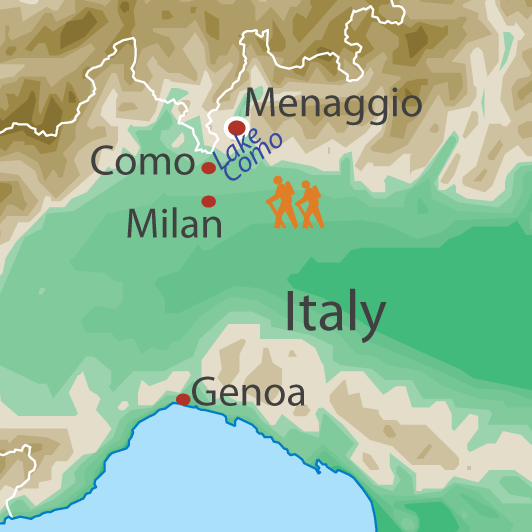
The post Mussolini Executed – April 1945 appeared first on Enemy in the Mirror.
July 3, 2017
Home Front USA 1945
In the spring of 1945, with much of Europe and the Pacific in ruins, the end of the war was in sight for Americans. While total U.S. military deaths exceeded 400,000 in the European, North African and Pacific theaters, mainland USA never became a significant site of battle during WWII.
By mid-1945, the United States had produced 80,000 landing craft, 100,000 tanks and armored cars, 300,000 airplanes, fifteen million guns, and forty-one billion rounds of ammunition. It had also produced the world’s first two atomic bombs.
WWII brought a return of prosperity to the USA after the Great Depression of the 1930s. In addition to promoting the growth of big business and the military-industrial complex, permanent demographic changes involving women and minorities occurred that at times promoted social and economic gains. Americans also learned to expect federal government involvement in problems previously managed at the state or local level. Additionally, the role of the president grew more powerful than ever been before.
While basic American values endured, a more attractive, stable and secure future now seemed possible. WWII restored the self-confidence lost during the Depression and convinced many the American dream was alive and well. For many Americans this was to be recalled as “The Good War” fought by the “The Greatest Generation.”


The post Home Front USA 1945 appeared first on Enemy in the Mirror.
June 29, 2017
神風 – Kamikaze
With the inevitable loss of the war apparent, Imperial Japan dispatched young kamikaze (神風 = divine wind) pilots of the 205th Air Group on suicidal missions against the American ships in the Pacific, especially at Okinawa. Although damage to the American fleet at Okinawa was significant (21 ships sunk and 66 damaged), it did not change the outcome of the battle.
Nothing is sadder, more desperate, than the many young men who volunteered for suicidal attacks. Reportedly, those who volunteered for the 205th Air Group were guaranteed a place in heaven for sacrificing their life for the emperor. Although theoretically barred from joining the 205th, parental appeals usually allowed an only son to join.
At the beginning of the Pacific War, Imperial Japanese pilots received up to 500 hours of training before being sent into action. Additionally, many of these pilots were older and more experienced. In contrast, kamikaze pilots were usually much younger (most
Although terrifying in the battle of Okinawa, the strategy of kamikaze attacks ultimately proved futile:
Due to the overwhelming firepower of the U.S. Navy, most kamikaze pilots never reached their targets
While the raids inflicted significant damage, a staggering 169 of 193 kamikaze planes were destroyed at Okinawa
__________________

The concept of the Divine Wind comes from a 13th Century typhoon that wrecked a Mongolian fleet, saving Japan from an imminent invasion. It was seen at the time as the work of the gods, who had heard and answered the prayers of the Japanese Emperor.
____________
Here is an excerpt from my book Enemy in the Mirror: Love and Fury in the Pacific War:
Training Manual for Special Attack Force Pilots
Transcend life and death.
When you eliminate all thoughts about life and death, you will be able to totally disregard your earthly life. This will also enable you to concentrate your attention on eradicating the enemy with unwavering determination, meanwhile reinforcing your excellence in flight skills.
When diving and crashing onto a ship, aim for a point between the bridge tower and the smokestacks.
Do your best. Every deity and the spirits of your dead comrades are watching you intently.
Just before the collision it is essential that you do not shut your eyes for a moment so as not to miss the target.
You are two or three meters from the target. You can see clearly the muzzles of the enemy’s guns. You feel that you are suddenly floating in the air.
At that moment, you see your mother’s face. She is not smiling or crying. It is her usual face.
Remember when diving into the enemy to shout at the top of your lungs: “Hissatsu!” (Sink without fail!).
At that moment, all the cherry blossoms at the Yasukuni shrine in Tokyo will smile brightly at you.
__________



The post 神風 – Kamikaze appeared first on Enemy in the Mirror.
June 26, 2017
ヤマト Yamato Sunk – 1945
In April 1945, the Japanese battleship Yamato, the pride of the Imperial Japanese Navy and heaviest battleship in the world, was dispatched from Japan with nine other warships on a suicide mission against Allied forces attacking Okinawa. Before reaching Okinawa, the task force was heavily damaged by American carrier-borne aircraft. The Yamato and five other Japanese warships were sunk. Of Yamato’s 3,000-man crew, only 269 survived.
The loss of the Yamato was a tragic blow to Japanese morale. Viewed as the supreme symbol of naval power, many citizens believed that Imperial Japan could never fall as long as this great warship was still in action.
The post ヤマト Yamato Sunk – 1945 appeared first on Enemy in the Mirror.
June 22, 2017
Okinawa – April 1945


The Battle of Okinawa (April 1-June 22,1945) was the last and largest of the Pacific War. Intending to establish bases for the invasion of mainland Japan, 287,000 troops of the U.S. 10th Army attacked 130,000 soldiers of the Imperial Japanese 32nd Army on April 1, 1945.
The Japanese devised a defensive strategy on Okinawa that differed from their previous tactics of resisting invasion forces on the beaches. Instead, they employed a series of strategic lines across the island with pillboxes and strongpoints within caves and even ancient castles. Interlinked defensive positions were able to survive intensive artillery fire and air strikes, enabling a fierce defense for several weeks. In the bloody battle that ensued, Allied forces had to extinguish each defensive position one by one, often using dynamite or flamethrowers.
In addition, the Japanese made massive suicidal attacks against Allied ships with “Special Attack Force” aircraft (Kamikaze) and deployed their gigantic battleship Yamato to be sacrificed in the battle.
____________
At the end of the campaign on June 22, casualties were staggering:
>77,000 Japanese soldiers dead
>65,000 Allied casualties (including 14,000 dead)
~100,000 civilian casualties
The American general Simon B. Buckner was killed by artillery fire
The Japanese general Ushijima Mitsuru committed suicide
____________
The post Okinawa – April 1945 appeared first on Enemy in the Mirror.
Enemy in the Mirror
I began by posting events around the turn This website www.enemyinmirror.com explores the consciousness, diplomacy, emotion, prejudice and psychology of 20th Century America and her enemies in wartime.
I began by posting events around the turn of the 20th century as I was researching my first novel about the Pacific War. I continued through WWII for my second novel about the Battle of the Atlantic. Now I am beginning to look at the Cold War as I gather information for my next novel about the Korean War. ...more
- Mark Scott Smith's profile
- 7 followers



